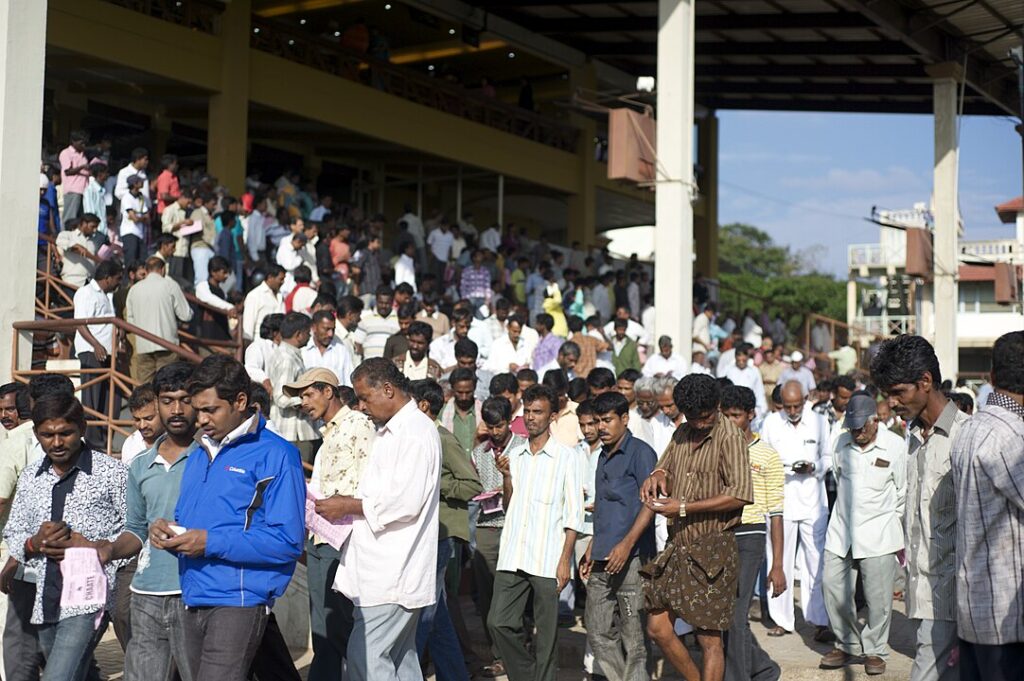Horse racing is a global sport, and although most people believe that its modern version originated in the UK, just because it is fun and exciting, it quickly traveled the world and even reached places like India.
Yes, when you think of India, cricket is probably the first thing that comes to mind, but horse racing is also a popular sport here. Yes, its roots are aristocratic and theatrical, but the sport has also grown into a modern (and sometimes messy) industry, with stud farms, tote systems, regulatory battles, and a calendar that still manages to stop Mumbai in its tracks every February.
India is a fun place to explore a sport like horse racing, just because it has a long history. This inspired us to take a closer look at horse racing in India, trace its roots, and its path to a modern industry.
Where It All Began
Many people believe that India is quite new to horse racing, but that’s not the truth. Horse racing has been present here for more than two centuries. Yes, it might not be the first country that adopted horse racing, but it is certainly not new to the sport.
The first racecourse traces back to Madras in the late 18th century, and from there the sport spread as the British established clubs and formalized fixtures. Yes, the Brits are mainly responsible for spreading the roots of horse racing, not just in India, but also on every other continent.
Today’s racing in India isn’t as big as in the United States, and the country only has a couple of tracks under six main turf authorities. Yes, it might be small, but the sport has a tidy structure that gives it a national footprint while preserving each club’s local character.
From Cantonments to Clubs
Now, just like any country that started introducing a new sport, the early races were not really professional or overseen by a local racing authority. However, since the sport is known for its history, many of those small early races grew into serious institutions.
We now have The Royal Western India Turf Club (established in 1800), which runs the Mahalaxmi racecourse in Mumbai and the Pune Race Course, which are two of the most popular venues that still define the social calendar for a lot of fans. We are talking about a club with a history that stretches over two centuries, which reflects how deeply racing has spread its roots in India.
The Derby That Made February Feel Special
Every country has a racing month or a session (a couple of months) where the biggest races happen. Well, in India, this is reserved for February. This is the time when horse racing is at its highest.
But which events are responsible for this magic? Well, of course, we have the Indian Derby at Mahalaxmi. This is a true spectacle run over 2,400 meters on the first Sunday of February. To be honest, you have to go there to experience its vibe, just because it is something truly different. No wonder it is the most popular event in the entire country.
If we can compare it to another event, it is like the Breeders’ Cup, but in India. Participants come from different countries, the grandstand is full of people, and they all make a bet. With the Breeders’ Cup right around the corner, maybe we can learn some strategies that can be applied in February in India.
To learn more about the Breeders’ Cup this year, click the link below: https://www.twinspires.com/breeders-cup/
Breeding and Bloodlines
Racing here isn’t only about grandstands and bookmakers; it’s also a living breeding industry. The Indian Stud Book keeps the official record of thoroughbred breeding, stallions, mares, progeny, and ensures the sport’s foundation stays sound. Restricting races to Indian-bred thoroughbreds has encouraged domestic investment and a serious stud-farm ecosystem.
Names like Poonawalla Stud Farms and Kunigal Stud Farm are part of that story. Poonawalla’s operation, for example, regularly touts classic winners and a long list of champions, while Kunigal, whose history is linked to Tipu Sultan and later the British cavalry, is widely cited as India’s oldest stud farm. If you want the through-line from “royal sport” to “modern industry,” this is it: a homegrown bloodstock program that feeds the track.
How the Sport is Organized Today
India’s racing calendar is run through six turf authorities (Kolkata, Mumbai/Pune, Chennai/Ooty, Bengaluru, Hyderabad, Mysuru), collectively recognized under the Turf Authorities of India and plugged into the international scene via the Asian Racing Federation.
On race day, you’ll still find a mix of on-course bookmakers and pari-mutuel (pool) betting, a hybrid that keeps the old texture even as technology nudges operations forward.
Law & Regulation
Now it’s time for the boring stuff that nobody likes to talk about, but it is still an important factor that directly affects the popularity of a sport. Legally, Indian racing stands on firmer ground than many realize.
In a landmark 1996 judgement, the Supreme Court held that horse racing is a game of skill, not chance, just because it hinges on knowledge of horses, jockeys, distances, and track conditions. These classifications have shaped how authorities regulate race-day wagering, and it is the reason why on-course betting has been available here for quite some time.
Final Words
If the last few years proved anything, it is that tradition and modernization can work at the same time. Horse racing in India should continue to grow in the future. We don’t expect anything drastic or that the sport would overcome cricket, but it certainly has the right structure for a bright future.




